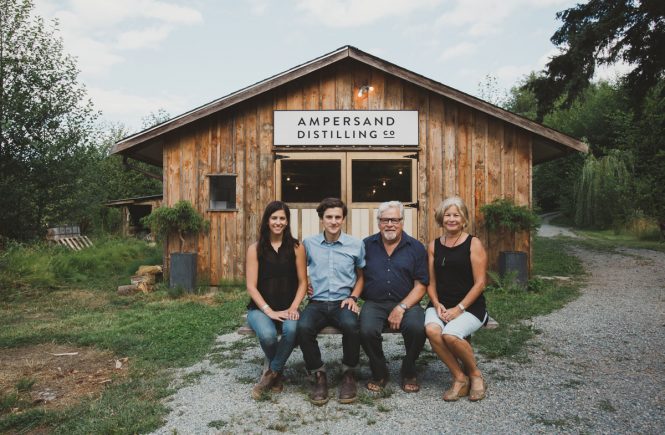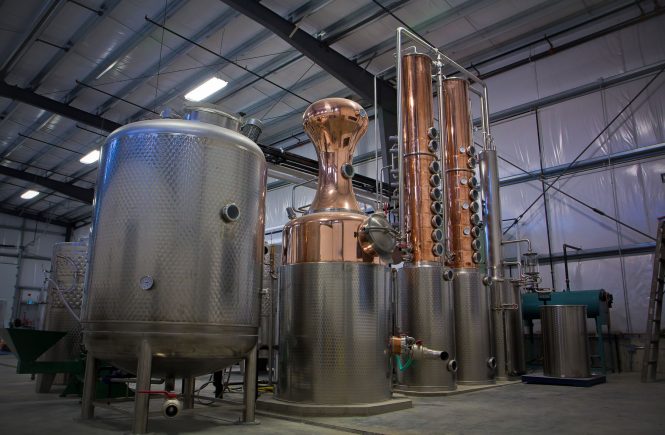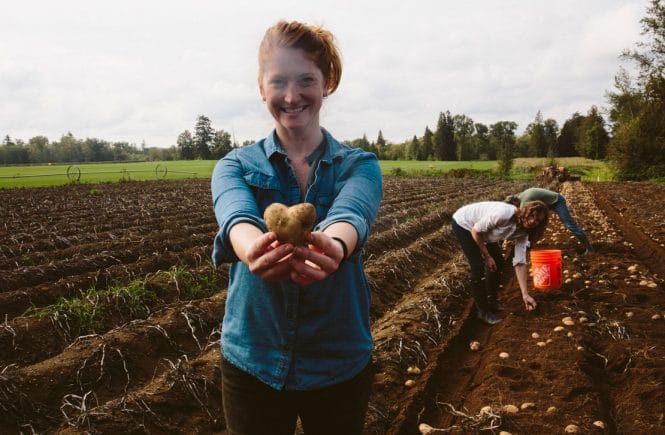After five long years, Shelter Point’s single malt has come of age
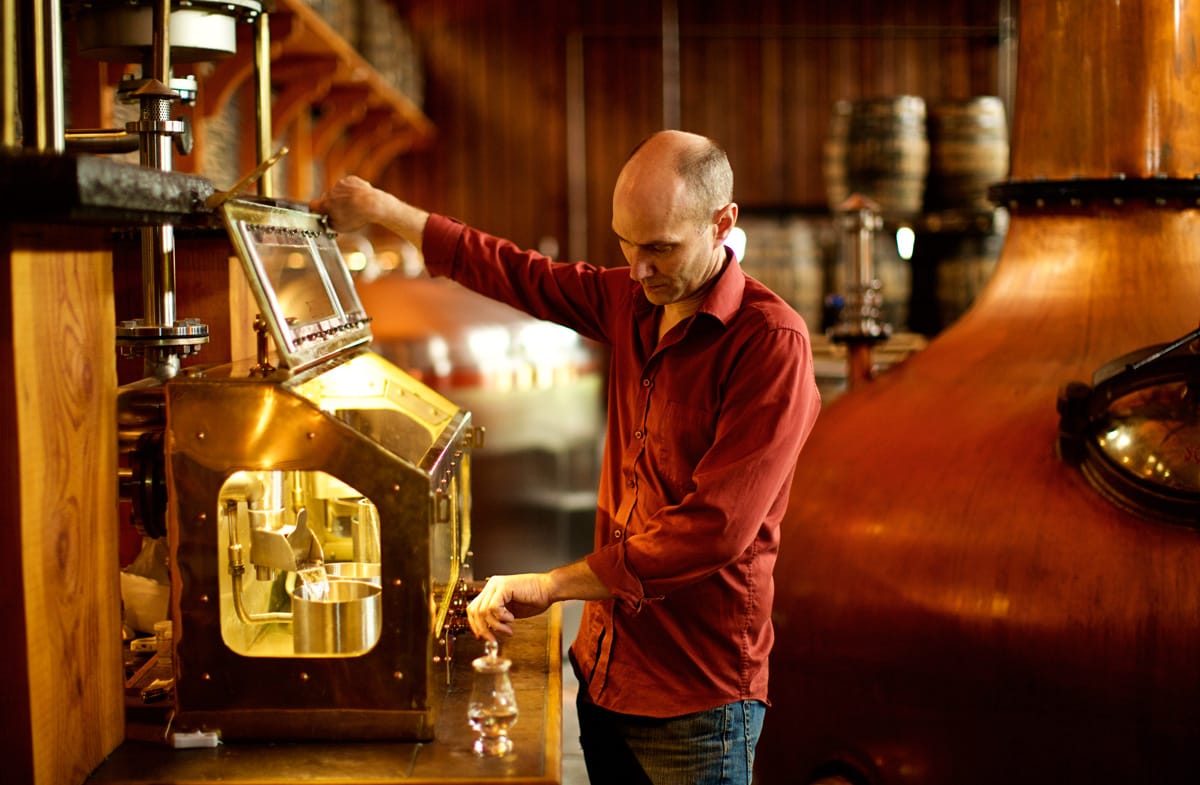
“Ready for the tour?” Patrick Evans asks with a chuckle. I climb into the 4×4 expecting a leisurely ride through Shelter Point Distillery’s expansive property.
I am mistaken: Evans hits the gas and we’re off-roading into the bush faster than I can say, “I’ll take a wee dram.”
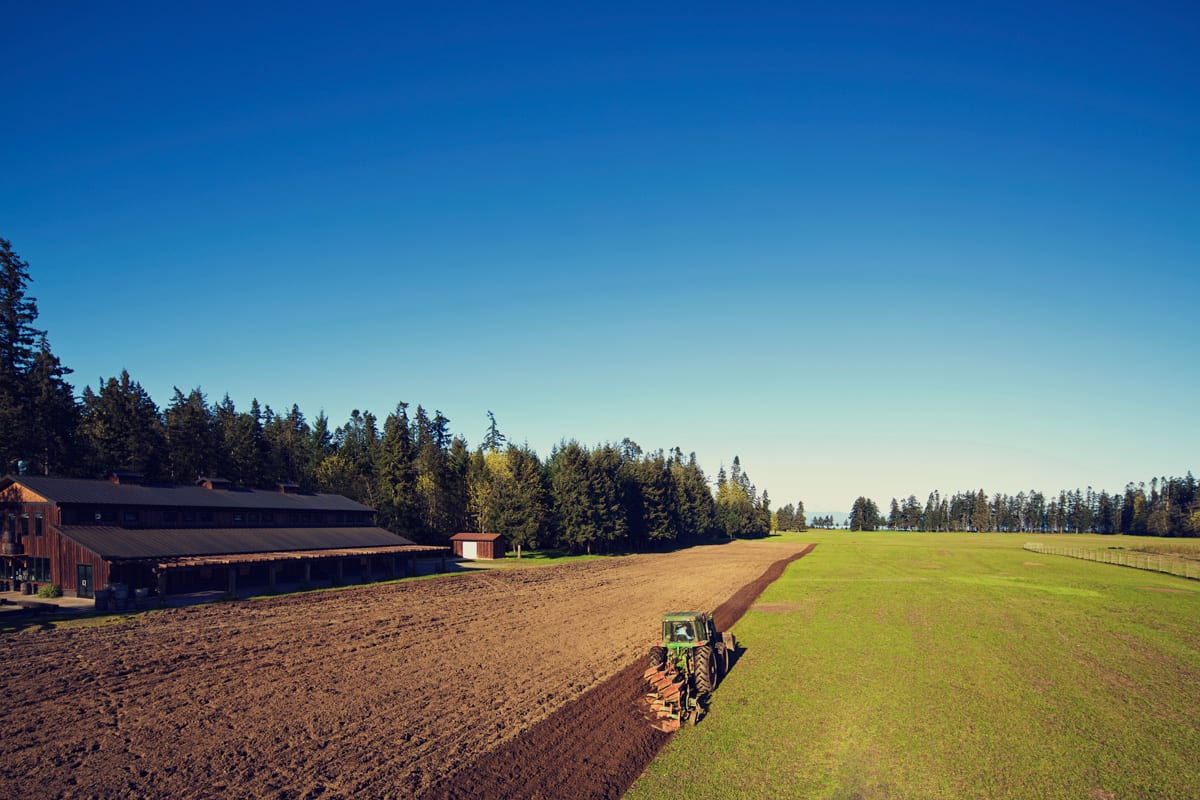
But let’s back up for a moment. In 2005, Evans (a third-generation farmer) and his family purchased the 380 acres of property in Campbell River, B.C., 140 km north of Nanaimo. Evans asked himself what the best use of the land would be, and decided it was to bring a value-added industry to the shores of Vancouver Island. “Can you say single malt?” he laughs.
Established in 2011, Shelter Point is B.C.’s only pot-distilled single malt whisky distillery, and only the second in Canada. The traditional copper pot stills — prized for the style of spirit and the flavour profile they bring to the finished whisky — were shipped from Scotland, via the Panama Canal.
Evans made his longtime farming colleague James Marinus his main distiller, bringing in several experts as consultants along the way. “The first year, we relied heavily on Michael Nicholson, who had a long career being a master distiller in Scotland,” Evans notes. “Luckily for us, he retired to Victoria and was able to work with us for six months.
“We still bring out different distillers. It’s like working with different chefs — each has their own area of expertise.”
The grain — barley — is grown on 200 acres of their farm; the all-important water is drawn from a mountain-fed aquifer from beneath the ground at Shelter Point.
The other essential ingredient in traditional single malt whisky is time. And so they distilled the whisky, batch-by-batch, and they waited. For five years.
It’s hard to sit and wait for whisky to age, but what choice did we have?
“It’s hard to sit and wait for whisky to age, but what choice did we have?” says Marinus. “The first two years you don’t really think about it, by year three we started looking a little closer, sampling and contemplating the direction it was taking.” Mistakes were made. They ran the wash still too hot and it “went off like a volcano,” breaking all of the hydrometers.
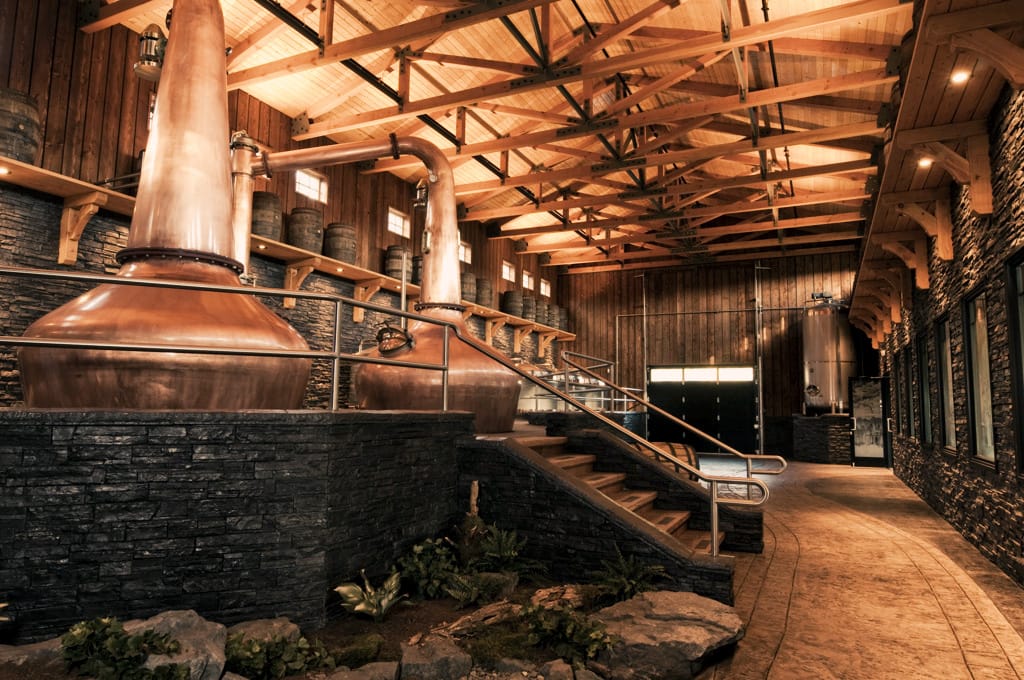
“As year four and five rolled around, things were improving quite nicely,” Marinus says. “Now we had something that was worthy of being shared with others.”
Finally, in May of this year, they released their first batch.
Evans pulls the 4×4 into a clearing, and that wee dram is poured. It’s balanced. It’s smooth. It’s everything, he says, that they were trying to achieve in terms of flavour.
Now, Evans and Marinus have their sights set on creating a booming industry in B.C. and distributing worldwide.
“It’s a great feeling to be able to release our whisky to everyone to enjoy,” says Marinus. “And as the years click by, our remaining whisky will continue to age and improve for later releases.”
SPIT AND POLISH: The highly prized copper stills were held up en route by U.S. customs for a month; it took 200 hours of Campbell River elbow grease to bring them back to their former glory.
IN THE AIR: Aging the whisky in oak barrels close to the Salish Sea adds complexity to Shelter Point’s single malt.
—by Jennifer Foden


